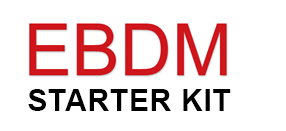EBDM Starter Kit
Activity 2: Build individual agencies that are collaborative and in a state of readiness for change

For evidence-based decision making to be effective, it must occur with consistency throughout the justice system. That is, the reliance on evidence to inform decision making should occur at the system level, at the agency level, and at the case level.
Agency- and case-level alignment requires a specific focus on organizational development within each of the justice system agencies. This involves
- reevaluating agency mission, goals, and values to support a vision that is shared by all the justice system stakeholders as well as by the agency’s workforce;
- reconsidering agency policy and practice in light of evidence-based knowledge;
- in some instances, retooling organizational structure;
- addressing, where necessary, organizational culture to align with a new vision, mission, and goals; and
- providing new knowledge and skills for staff.
Defining Organizational Development
Organizational development is the practice of changing internal systems, and people, for the purposes of vision and mission advancement.
For these change efforts to take hold, they must prove themselves to be reliable and to better support staffs’ ability to effectively carry out their duties. For example, if at the sentencing stage, objective data is provided to defense counsel, prosecutors, and judges that effectively informs and shapes the sentencing decision, decision makers will come to not only expect but also to rely on this information in the future. If, on the other hand, the information provided is neither useful nor reliable, the new approach of considering objective data will be abandoned and past practice will prevail.
Organizational change is not easy, nor is it always successful. According to experts
- up to 85% of organizational change initiatives fail; and
- up to 70% of these failures are due to flawed execution.1
Click on the document in the left menu bar for an activity designed to assist you in establishing EBDM consistently within individual agencies and across the criminal justice system.
Elements of an EBDM justice system include
- agencies that demonstrate a collaborative climate and readiness for change; and
- an engaged staff who provide meaningful, ongoing input into evidence-based policy and practice changes.
1Rogers, Wellins, & Connor, 2002.

